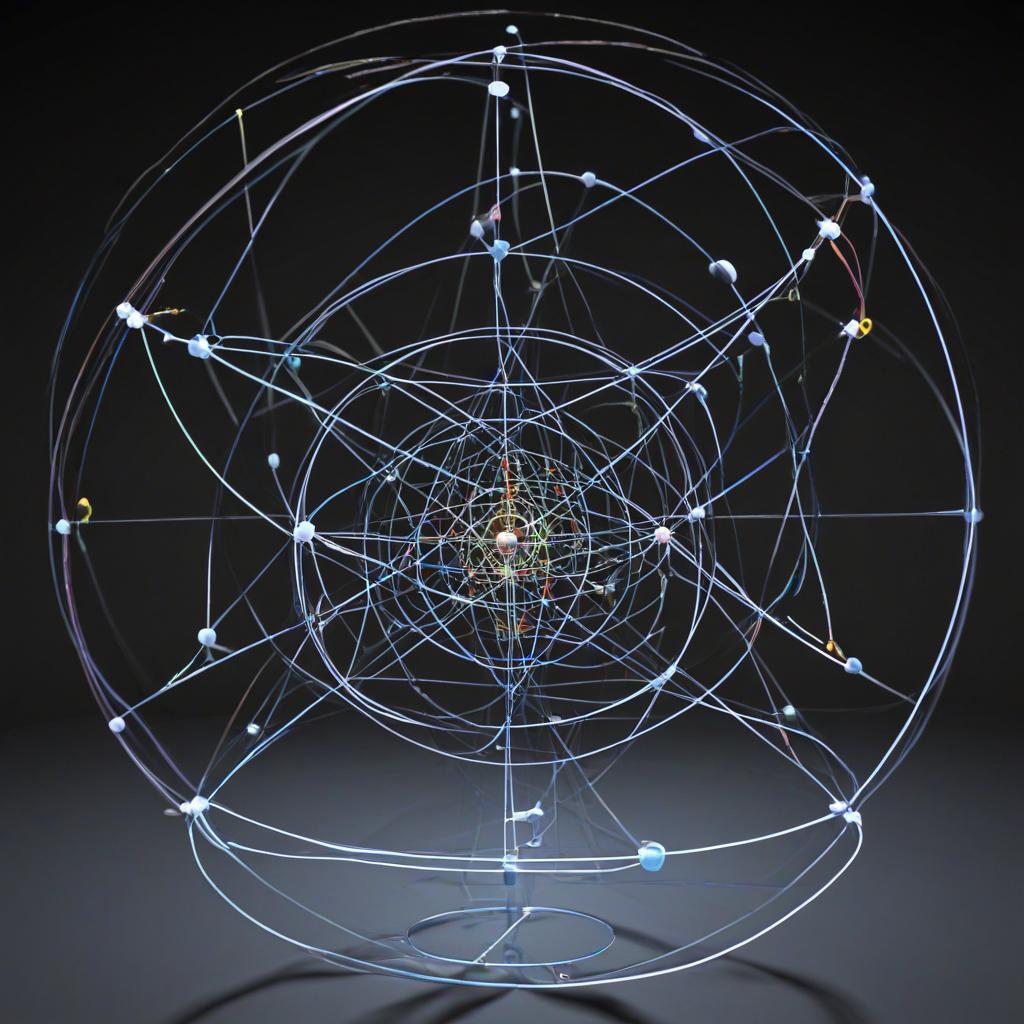The Relationship Between Planck’s Constant, Einstein, and Quantum Physics
In the early 20th century, the scientific world underwent a dramatic shift with the introduction of quantum mechanics, fundamentally changing our understanding of nature at the smallest scales. Central to this revolution were the contributions of Max Planck and Albert Einstein, whose insights laid the groundwork for quantum theory. Key to this story is Planck’s constant, a fundamental quantity that plays a pivotal role in quantum physics. In this blog post, we will explore the relationship between Planck’s constant, Einstein’s contributions, and how both are tied to the principles of quantum mechanics.
1. Max Planck and the Birth of Quantum Theory
Max Planck is widely regarded as the father of quantum theory. In 1900, while studying blackbody radiation (the emission of light from heated objects), Planck discovered something that could not be explained by classical physics.
The Problem of Blackbody Radiation
According to classical physics, objects should emit an infinite amount of energy as they get hotter. However, experiments showed that at high frequencies, the energy emitted by blackbodies decreases instead of increasing infinitely—this discrepancy is known as the ultraviolet catastrophe.
Planck’s Solution: Quantization
Planck resolved this issue by proposing that energy is not emitted continuously but rather in discrete packets, or quanta. He formulated the relationship between the energy (EEE) of these packets and the frequency (fff) of the radiation:E=h⋅fE = h \cdot fE=h⋅f
Here, hhh is Planck’s constant—a fundamental constant that dictates the size of the energy quanta. Planck’s constant has a very small value (6.626×10−34 Js6.626 \times 10^{-34} \, \text{Js}6.626×10−34Js), which explains why quantum effects are not easily noticeable at the macroscopic scale but become crucial at atomic and subatomic levels.
2. Albert Einstein and the Photon Theory of Light
In 1905, Albert Einstein expanded on Planck’s ideas in his paper on the photoelectric effect, which provided strong evidence for the quantum nature of light.
The Photoelectric Effect
In the photoelectric effect, light shining on a metal surface can eject electrons from the metal. Classical wave theory predicted that increasing the intensity of light should result in more energetic ejected electrons, but experiments showed that only light above a certain frequency could eject electrons, regardless of intensity.
Einstein’s Contribution
Einstein proposed that light itself is composed of discrete quanta called photons, each with energy determined by Planck’s equation:E=h⋅fE = h \cdot fE=h⋅f
Einstein’s bold assertion that light behaves not only as a wave but also as a particle (a concept now known as wave-particle duality) revolutionized our understanding of light and laid the foundation for quantum mechanics. He showed that photons with higher frequencies (and thus higher energy) could eject electrons, explaining the photoelectric effect and earning him the Nobel Prize in 1921.
3. Planck’s Constant and Quantum Mechanics
Planck’s constant is more than just a constant in an equation—it is the cornerstone of quantum mechanics. It signifies the quantization of energy, which means that at microscopic scales, quantities like energy and angular momentum cannot vary continuously but only in discrete steps, or quanta.
Heisenberg’s Uncertainty Principle
One of the key implications of Planck’s constant is the Heisenberg uncertainty principle, which states that there is a limit to how precisely we can measure certain pairs of properties, such as position and momentum, simultaneously. The uncertainty principle can be expressed mathematically as:Δx⋅Δp≥h4π\Delta x \cdot \Delta p \geq \frac{h}{4\pi}Δx⋅Δp≥4πh
Here, Δx\Delta xΔx is the uncertainty in position, and Δp\Delta pΔp is the uncertainty in momentum. The product of these uncertainties is related to Planck’s constant, meaning that the smaller Planck’s constant, the more precisely we could theoretically measure these quantities. However, the constant’s non-zero value ensures that uncertainty is a fundamental aspect of quantum systems.
De Broglie’s Hypothesis
In 1924, Louis de Broglie extended Einstein’s wave-particle duality to matter. He proposed that particles, like electrons, also have wave-like properties, with a wavelength λ\lambdaλ related to their momentum ppp by Planck’s constant:λ=hp\lambda = \frac{h}{p}λ=ph
This discovery was experimentally confirmed and further demonstrated the central role of Planck’s constant in quantum mechanics.
4. The Quantum Revolution: Einstein, Planck, and Quantum Mechanics
Although Planck and Einstein contributed significantly to quantum mechanics, it is important to note that Einstein had a complicated relationship with quantum theory. While his work on the photoelectric effect was crucial, he later expressed discomfort with the probabilistic nature of quantum mechanics, famously saying, “God does not play dice with the universe.”
Einstein’s Critique of Quantum Mechanics
Einstein’s unease stemmed from the fact that quantum mechanics introduced inherent randomness. The probabilistic interpretation of quantum mechanics, championed by figures like Niels Bohr, was in contrast to Einstein’s belief in a deterministic universe.
Despite his misgivings, Einstein’s work on photons and the photoelectric effect solidified the foundations of quantum theory, and his legacy is deeply intertwined with the development of quantum mechanics.
5. Planck’s Constant in Modern Quantum Physics
Today, Planck’s constant remains at the heart of quantum theory. It appears in almost every fundamental equation in quantum mechanics, from Schrödinger’s equation, which describes the evolution of quantum systems, to the commutation relations that define quantum operators.
The Reduced Planck’s Constant (ℏ\hbarℏ)
A common variation of Planck’s constant is the reduced Planck’s constant (ℏ\hbarℏ), defined as:ℏ=h2π\hbar = \frac{h}{2\pi}ℏ=2πh
The reduced Planck’s constant is used in many formulations of quantum mechanics, especially in angular momentum and wave equations.
Quantum Field Theory
In quantum field theory, which merges quantum mechanics with Einstein’s theory of relativity, Planck’s constant plays an equally essential role. It governs the behavior of fields and particles at high energies and small distances, leading to predictions that have been confirmed by countless experiments.
Planck’s Constant and the Quantization of Nature
Planck’s constant doesn’t just represent energy quantization; it fundamentally sets the scale at which quantum effects become relevant.
- Boundary between Classical and Quantum Physics: Planck’s constant determines when we can apply quantum mechanics versus classical mechanics. At the macroscopic level (large distances and high masses), Planck’s constant is small enough that quantum effects are negligible, and the world behaves in accordance with classical Newtonian mechanics. However, at microscopic levels (atomic and subatomic scales), quantum behavior dominates. Without Planck’s constant, there would be no quantization, and energy, angular momentum, and other physical properties could vary continuously, making the classical world more chaotic and unpredictable.
- Energy Levels in Atoms: The quantization imposed by Planck’s constant directly explains why electrons in atoms occupy discrete energy levels. Without Planck’s constant enforcing this rule, electrons would be able to occupy any energy state, making atoms unstable, and the chemistry that underpins life as we know it would not exist.
2. Wave-Particle Duality and the Role of Planck’s Constant
The concept of wave-particle duality, one of the strangest aspects of quantum mechanics, is deeply rooted in Planck’s constant. It allows particles, such as electrons and photons, to exhibit both particle-like and wave-like properties.
- Matter Waves: Building on Planck’s constant, de Broglie’s hypothesis introduced the idea that particles like electrons also have wavelengths. These matter waves are observable only due to the smallness of Planck’s constant. For large objects, the associated wavelengths are too small to detect, but for subatomic particles like electrons, their wave nature becomes significant, explaining phenomena like electron diffraction and interference.
- Photons and the Compton Effect: The Compton Effect, discovered in 1923, demonstrates the particle-like nature of photons. When X-rays collide with electrons, the resulting shift in the wavelength of the scattered radiation can only be explained if photons are treated as particles with momentum. The calculation relies on Planck’s constant to relate photon energy to its frequency, reinforcing the idea that light behaves as both a wave and a particle depending on the situation.
3. Planck’s Constant in Modern Quantum Mechanics: Schrödinger Equation and Quantum States
Planck’s constant plays a crucial role in how we describe and predict the behavior of particles in quantum systems.
- Schrödinger’s Equation: One of the foundational equations of quantum mechanics is the Schrödinger equation, which describes how the quantum state of a physical system evolves over time. The equation is directly linked to Planck’s constant. In its time-dependent form, it can be written as:iℏ∂Ψ∂t=H^Ψi\hbar \frac{\partial \Psi}{\partial t} = \hat{H} \Psiiℏ∂t∂Ψ=H^ΨHere, Ψ\PsiΨ represents the quantum state of the system, and H^\hat{H}H^ is the Hamiltonian operator, which accounts for the total energy of the system. Planck’s constant, via ℏ\hbarℏ, appears in the equation and governs the evolution of these quantum states, connecting energy, time, and probability at the quantum level.
- Probability and Planck’s Constant: Planck’s constant is also crucial in defining the probabilistic nature of quantum mechanics. The wavefunction Ψ\PsiΨ gives the probability amplitude of finding a particle in a certain position. Planck’s constant governs how this probability amplitude evolves, and in turn, influences phenomena like tunneling, where particles have a finite probability of passing through energy barriers, despite lacking sufficient energy in a classical sense.
4. The Emergence of Quantum Entanglement and Nonlocality
Quantum mechanics introduced bizarre concepts that challenge our classical intuitions, and Planck’s constant plays an underlying role in these ideas, especially in quantum entanglement.
- Entanglement: Two or more particles can become entangled such that their properties (like spin, position, or momentum) are correlated, even when separated by large distances. Planck’s constant appears in the formalism that governs the behavior of entangled systems. Through the Heisenberg uncertainty principle and other quantum operators, Planck’s constant helps define how entangled particles share information and energy states.
- Nonlocality and the Einstein-Podolsky-Rosen (EPR) Paradox: Einstein famously resisted the implications of quantum mechanics, particularly entanglement, because it seemed to violate the principle of locality—that an object can only be influenced by its immediate surroundings. In the EPR paradox, Einstein argued that quantum mechanics must be incomplete since entangled particles seemed to influence each other instantaneously, which would require faster-than-light communication. However, experiments (like the Bell test experiments) have confirmed the predictions of quantum mechanics, with Planck’s constant playing an essential role in describing the statistical correlations between entangled particles.
5. The Concept of the Planck Scale and Quantum Gravity
Planck’s constant also points toward the limits of our current understanding of the universe, especially in the quest for a theory of quantum gravity.
- Planck Scale: The Planck scale refers to a set of natural units that define the smallest meaningful measurements of space and time, energy, and mass. At this scale, the effects of quantum mechanics, general relativity, and Planck’s constant converge. The Planck length (∼1.616×10−35 meters\sim 1.616 \times 10^{-35} \, \text{meters}∼1.616×10−35meters) represents the smallest possible length, beyond which our current theories break down, and quantum gravitational effects are expected to dominate. The Planck energy is similarly vast, indicating the energy scale at which quantum gravity effects cannot be ignored.
- Quantum Gravity: While quantum mechanics and general relativity are both highly successful in their respective domains, reconciling the two into a unified theory remains one of the greatest challenges in physics. Any theory of quantum gravity, including attempts like string theory or loop quantum gravity, must necessarily incorporate Planck’s constant, as it plays a role in the quantum properties of spacetime itself.
6. Quantum Electrodynamics (QED) and Planck’s Constant
Quantum Electrodynamics (QED) is the quantum field theory that describes how light and matter interact. It is one of the most precisely tested theories in all of physics, and Planck’s constant is a fundamental part of its formulation.
- Feynman Diagrams and Virtual Particles: In QED, interactions between particles are represented using Feynman diagrams, which depict the exchange of virtual particles like photons between charged particles. Planck’s constant, via its connection to quantum fluctuations, plays a role in determining the likelihood of these interactions and the behavior of virtual particles, which are central to the quantum vacuum and particle-antiparticle creation.
- Renormalization and Planck’s Constant: QED involves processes that can lead to infinite results, which physicists manage through a technique called renormalization. Planck’s constant helps define the small-scale structure of space and time, regulating the behavior of these infinities in a way that makes the predictions of QED finite and accurate.
7. Planck’s Constant and Modern Technological Applications
Planck’s constant is not just an abstract concept in theoretical physics; it underpins many modern technologies.
- Semiconductor Physics and Electronics: The behavior of electrons in semiconductors, which are the foundation of modern electronics, is described by quantum mechanics. Planck’s constant determines the energy levels that electrons can occupy in atoms, which in turn affects how materials like silicon conduct electricity. This is essential for understanding transistors, diodes, and other components in computer chips.
- Quantum Cryptography: Planck’s constant plays a role in quantum cryptography, a field that uses the principles of quantum mechanics to secure information. Techniques like quantum key distribution (QKD) rely on the fact that measuring a quantum system inevitably disturbs it, thanks to the uncertainty principle—a concept tied directly to Planck’s constant. This disturbance is used to detect eavesdropping in secure communication channels.
- Quantum Computing: Quantum computers leverage the superposition and entanglement of quantum states, both of which are governed by Planck’s constant. The efficiency of quantum algorithms, like Shor’s algorithm for factoring large numbers, depends on manipulating quantum bits (qubits), whose behavior is dictated by Planck’s constant at the fundamental level.
Conclusion
Planck’s constant is not just a symbol in an equation—it is a fundamental building block of the universe, governing everything from the smallest scales of subatomic particles to the largest scales of cosmology. Its discovery led to the birth of quantum mechanics, and its role has been essential in understanding the duality of nature, quantum uncertainty, and the interaction between energy, matter, and light.
Einstein’s work, while revolutionary in its own right, was heavily influenced by Planck’s constant. Together, their contributions form the core of quantum physics, a field that continues to challenge, perplex, and inspire scientists as we push the boundaries of knowledge toward quantum gravity and beyond.
The discovery of Planck’s constant by Max Planck and its subsequent use by Albert Einstein in explaining the photoelectric effect marked the beginning of the quantum revolution. Planck’s constant serves as the bedrock of quantum mechanics, defining the scale at which quantum effects dominate and influencing a vast array of phenomena, from the behavior of subatomic particles to the nature of light.
While Einstein famously wrestled with the probabilistic implications of quantum mechanics, his contributions were crucial to its development. Today, Planck’s constant remains a fundamental quantity in our understanding of the quantum world, shaping the principles that govern everything from photons to electrons to the very fabric of space and time.
In the end, both Planck and Einstein’s work exemplify how deeply quantum mechanics has reshaped our view of the universe, leading us to an era where the strange and often counterintuitive behavior of nature at its smallest scales has become a cornerstone of modern physics.
Key Takeaway: Planck’s constant is the link between the classical and quantum worlds, governing the discrete nature of energy and shaping the framework of quantum mechanics—a field to which both Max Planck and Albert Einstein made indispensable contributions.






